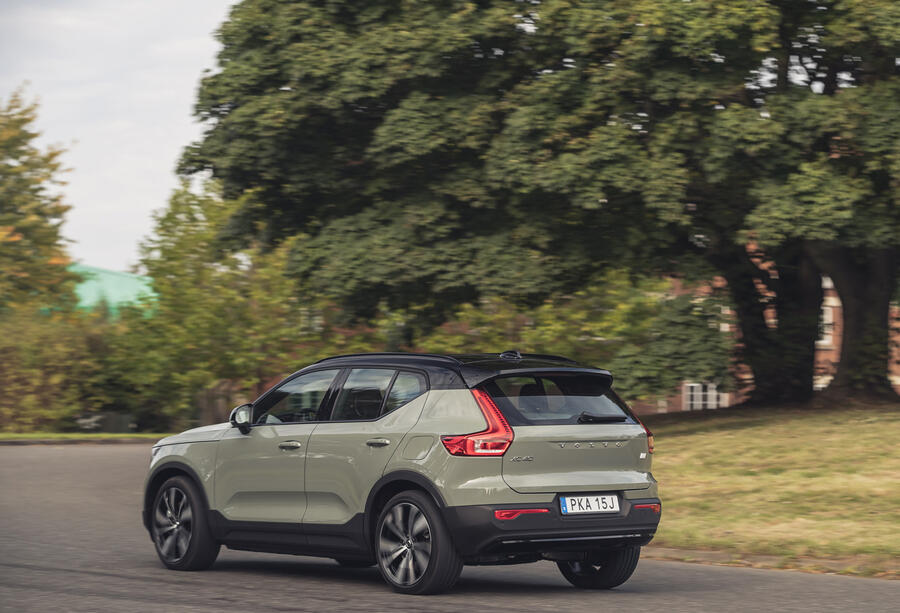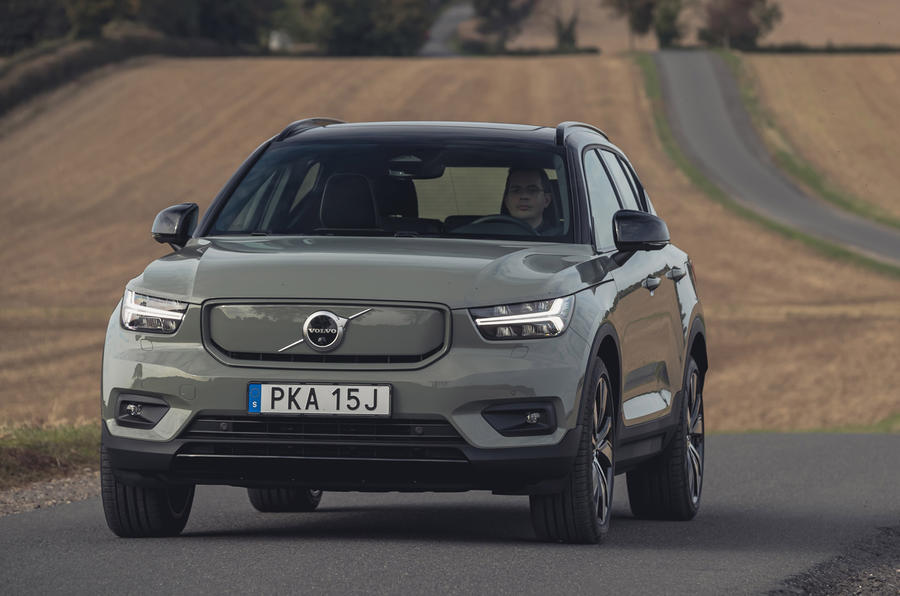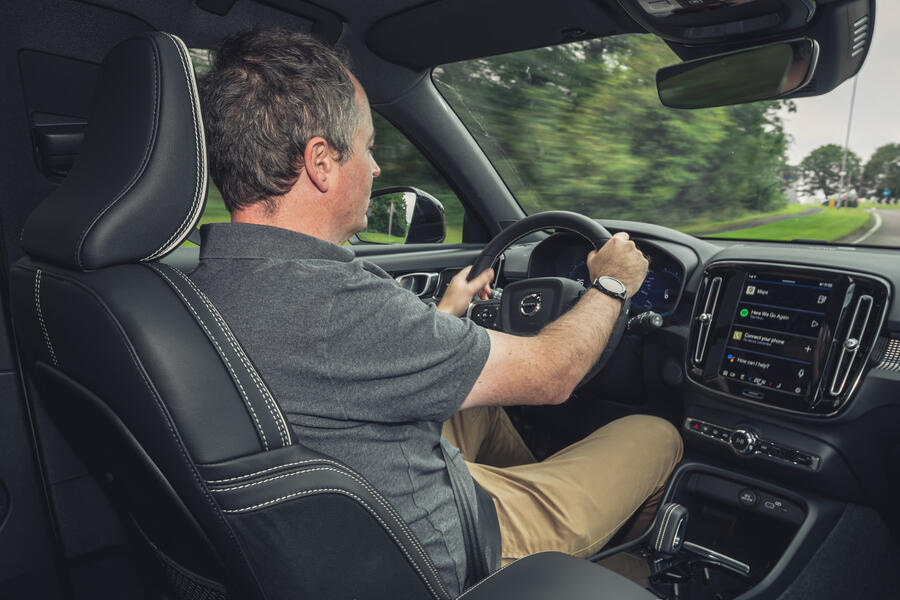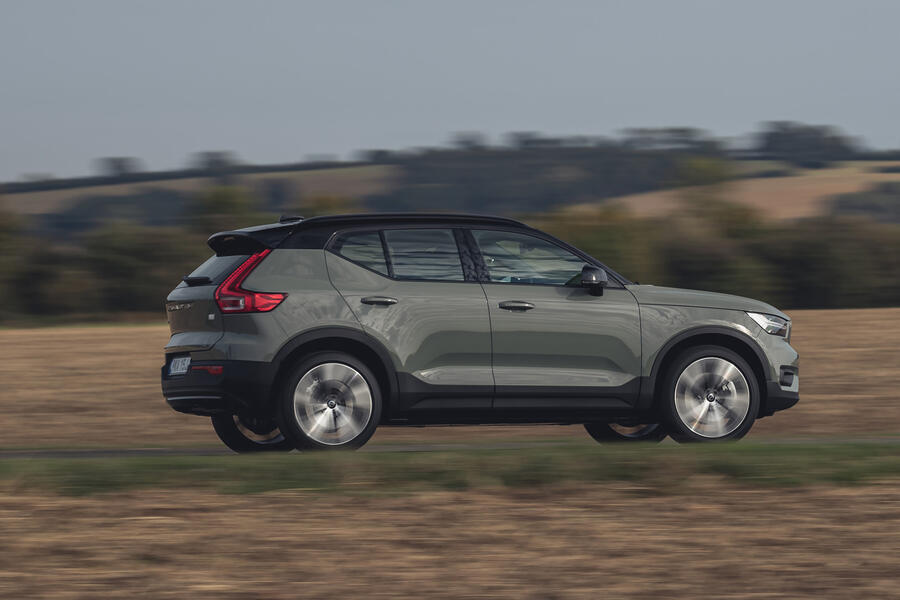What is it?
Although based on the familiar form of the Volvo XC40 crossover, Volvo’s first full EV shares its core mechanical layout with the Polestar 2.
As launched in all-wheel-drive P8 form, it uses a pair of 201bhp electric motors, one driving each axle, for a combined system output of 402bhp. Power is drawn from a 78kWh battery pack that can give up to 260 miles of range under the WLTP protocol and is mounted under the floor. Using 150kW DC fast charging, it will be possible to replenish the battery from empty to 80% charge in 40 minutes.
As with the Audi E-tron, the intention here has clearly been to offer buyers coming from the company’s internal-combustion models a familiar experience. Beyond some very subtle badging, the only obvious visual difference from other XC40s is the Recharge P8’s lack of a conventional radiator grille, which has been replaced by a body-coloured cover.
The cabin is similarly familiar, with a redesigned digital instrumentation pack that does away with the rev counter, but the same combination of space and trim that feels more durable than upmarket. Volvo is proud that the Recharge has nearly as much boot space as the regular XC40 – 413 litres – with another 31-litre ‘frunk’ under the bonnet, although this is mostly filled by the car’s charging cable.
Deliveries will start in the first quarter of next year, with the launch spec in the UK being the fully loaded First Edition. This costs a weighty £59,985 and is too expensive to be eligible for the government’s electric car grant. Cheaper versions will follow soon afterwards, including less powerful front-drive variants.



























Join the debate
Add your comment
Wow, too much bunga £££
This is a nice car but price is ludicrous. Will be interesting to see what the lower spec versions cost. A 2WD Versition with just £201BHP would make more sense at sub £40k
After seeing what a disaster the Polestar 2 is, I’d avoid it!
Just look at Bjorn Nyland's videos on Toutube of the Polestar 2 which shares its chassis, interior design, batteries, motors and software with the XC40 Recharge. The Polestar has proved to be so highly inefficient it's unbelievable. Instead of offering Model 3 like efficiency, it's closer to an e-tron meaning your range will be way off the claimed figures. A Model 3 AWD/Performance can achieve 160-190 Wh/km (depends on wheels and tires chosen, 18" aero wheels/Michelin MXM4, 19" sport wheels/Continental ProContact RX, or 20" Performance wheels/Michelin PS4S) at motorway speeds (75mph/130kmh), a Polestar 2 PP consumes 35-40% more energy. When comparing a Model 3 with 18" aero wheels vs. regular Polestar 2 the gap grows even larger.
It’s a Volvo.
Doesn't quite ring true these days, I mean, why start with fully loaded first edition?, what's the reason, and it's not just Volvo by the way, for first editions, selling a car with 70, 80% of tech you'll hardly use if ever, there's no cache in having a car like this just to annoy your neighbours, it's a waste of money, no, it used to be that the lower spec was launched first and then the all singing all dancing appeared.